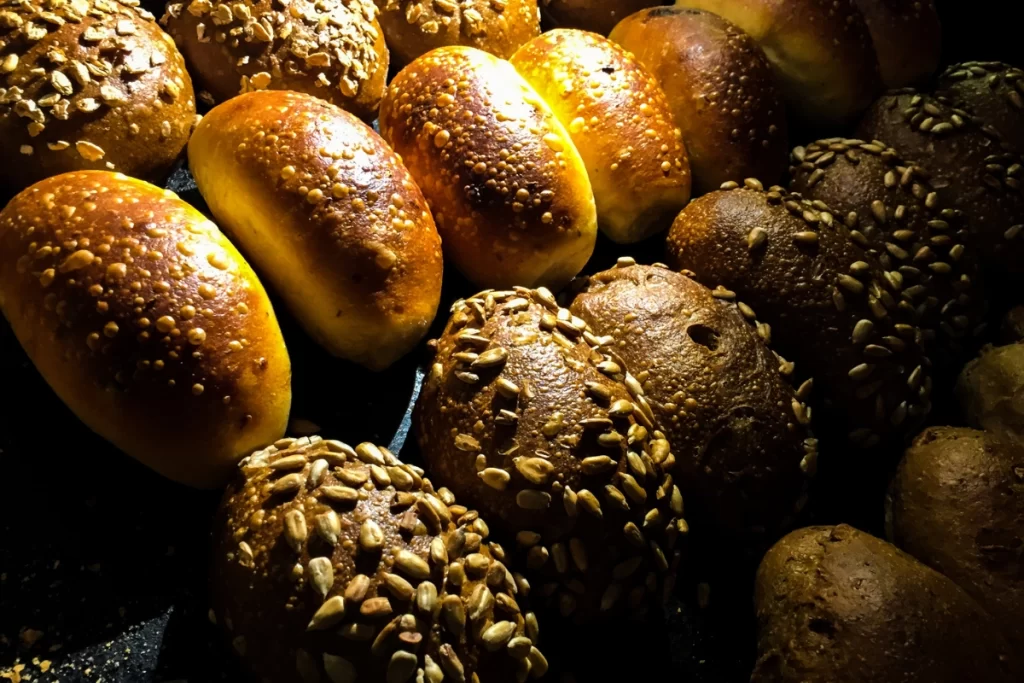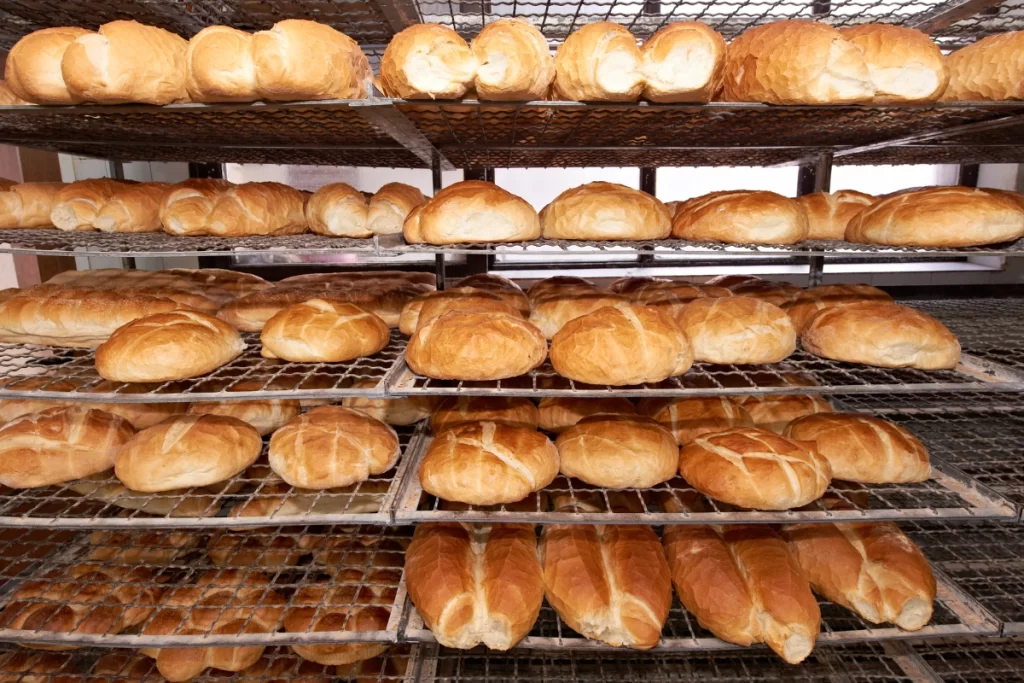The baking industry has undergone a significant evolution over time, adapting to changes in technology, consumer preferences, and ingredient innovations. Originally, baking was a simple process involving basic ingredients like flour, water, and yeast. However, with the advent of industrialization, the industry witnessed a major shift. The mass production of baked goods became possible, leading to more consistent quality and the introduction of a wider variety of products.
In more recent years, the focus has shifted towards health-conscious and specialized products, catering to demands for gluten-free, low-carb, and artisanal breads. This has led to the exploration and adoption of new ingredients and techniques to improve texture, shelf-life, and nutritional value.
One such ingredient that has gained popularity in the baking industry is Carboxymethyl Cellulose (CMC). CMC is a derivative of cellulose and is widely used as a thickener, stabilizer, and emulsifier in various food products, including baked goods. It is particularly valued in the baking industry for its ability to retain moisture, improve texture, and extend the shelf life of products. CMC is also used to achieve specific textures in gluten-free and reduced-fat baked goods, making it a versatile ingredient in modern baking.
The increasing use of CMC in baking is a reflection of the industry’s ongoing adaptation to consumer needs and technological advancements. It highlights the industry’s commitment to innovation and its ability to incorporate new ingredients to meet changing market demands.

The Role of CMC in Baking
CMC’s role in baking is multifaceted. Primarily, it serves as a stabilizer and thickener, which is crucial in maintaining the integrity of baked goods. When added to dough or batter, CMC interacts with the other ingredients to improve texture and consistency. For instance, in gluten-free baking, where achieving the right texture can be challenging, CMC steps in to provide the necessary structure and elasticity typically provided by gluten.
Moreover, CMC has water-binding properties, which means it helps retain moisture in baked goods. This aspect is particularly important in products like cakes and bread, where dryness can significantly diminish quality. By retaining moisture, CMC not only improves the mouthfeel but also extends the shelf life of these products. This makes it an invaluable ingredient in the commercial baking sector, where extended shelf life directly translates to reduced waste and increased profitability.
Advantages of Using CMC in Baking
The use of CMC in baking comes with a host of advantages. First and foremost, its ability to enhance texture is unparalleled. Bakers often struggle with achieving consistency in texture, especially when dealing with large batches. CMC brings a level of control and predictability to the process, ensuring that each batch maintains a consistent quality.
Another significant advantage is moisture retention. Baked goods that tend to dry out quickly can benefit greatly from CMC. By maintaining moisture, CMC not only improves the overall eating experience but also extends the shelf life of these products. This is particularly beneficial in commercial settings where products need to remain fresh over extended periods.
In addition to these benefits, CMC is also allergen-free, making it an excellent option for bakers catering to a clientele with various dietary restrictions. Its use in gluten-free and dairy-free recipes is a testament to its versatility and adaptability in meeting the diverse needs of consumers.
Comparative Analysis: CMC vs. Other Baking Additives
When it comes to baking additives, the market is brimming with options, each offering unique benefits. However, CMC stands out for its multifunctional properties. Let’s compare CMC with other common baking additives to understand its superiority.
For instance, consider xanthan gum, another popular baking additive. While xanthan gum is excellent for gluten-free baking and provides elasticity, it doesn’t match CMC’s ability to retain moisture and extend shelf life. Gelatin, another additive, is great for setting and gelling, but falls short in vegan baking due to its animal-derived origin, whereas CMC is plant-based and suits a broader range of dietary preferences.
Moreover, when compared to traditional thickeners like cornstarch or flour, CMC has a clear advantage in terms of stability under varying temperature and pH levels. This stability ensures consistency in diverse baking environments and product types, a crucial factor in large-scale production.
Thus, while other additives have their place in baking, CMC’s versatile and stable nature makes it a preferred choice for bakers aiming for consistency, quality, and inclusivity in their products.
Expert Opinions: Why Top Bakers Prefer CMC
To understand why top bakers prefer CMC, it’s essential to dive into their insights. Many professional bakers highlight CMC’s role in achieving a perfect balance of texture, moisture, and shelf life. They often point out that CMC allows them to create products that are not only delicious but also visually appealing and texturally satisfying.
Some bakers emphasize CMC’s consistency in results. Unlike some natural ingredients that can vary in quality, CMC offers a reliable standard, ensuring that each batch of baked goods meets the desired quality. This reliability is crucial in professional baking, where customer satisfaction hinges on consistent quality.
Additionally, expert bakers appreciate CMC’s versatility. It can be used in a wide range of baked products, from delicate pastries to hearty bread, making it a valuable addition to any baker’s pantry. This flexibility allows for creative freedom, enabling bakers to experiment and innovate with their recipes.
Case Studies: Success Stories in Baking with CMC
Examining real-world examples provides a concrete understanding of CMC’s impact in baking. For instance, a bakery specializing in gluten-free products adopted CMC and saw a dramatic improvement in the texture and shelf life of their bread and cakes. Customers noted the enhanced softness and longer freshness, leading to increased sales and customer satisfaction.
Another case study involves a commercial bakery that incorporated CMC into its cookie production line. The result was a more consistent batch quality with improved moisture retention, which was particularly noticeable in their softer cookie varieties. This change not only improved the product quality but also reduced waste due to fewer unsold or stale cookies.
These case studies illustrate CMC’s real-world benefits, showcasing its ability to solve common baking challenges and contribute to the success of baking enterprises, both small and large.
Innovative Baking: Creative Uses of CMC in Baking
The realm of baking is constantly evolving, and CMC plays a pivotal role in fostering innovation. Beyond its standard uses, creative bakers are exploring new ways to utilize CMC to push the boundaries of what’s possible in baking.
One innovative application of CMC is in the creation of edible films and coatings. These films, which can be used to wrap or coat baked goods, offer a unique way to infuse additional flavors or create interesting textures. Moreover, these films can act as barriers to moisture and oxygen, further extending the shelf life of the products.
Another area of innovation is in the development of vegan and gluten-free alternatives. Bakers are using CMC to replicate the textures and structures traditionally achieved with gluten or animal-based products. This has led to the creation of a wider variety of inclusive baked goods, meeting the dietary needs and preferences of a diverse consumer base.
Additionally, CMC is being experimented with in molecular gastronomy, where it is used to create unique textures and shapes, such as foams and gels, offering a new dimension to the art of baking.
Health and Safety Aspects of CMC
Addressing health and safety concerns is crucial when discussing food additives. CMC, being a food-grade substance, is generally recognized as safe (GRAS) by food safety authorities like the FDA. It is non-toxic and hypoallergenic, making it a safe choice for most consumers.
In terms of dietary considerations, CMC is calorie-free and does not affect blood sugar levels, which makes it suitable for use in low-calorie and diabetic-friendly recipes. Being derived from cellulose, a natural fiber, it is also a suitable additive for vegetarian and vegan diets.
However, as with any additive, moderation is key. Excessive consumption of CMC, though rare, can lead to gastrointestinal discomfort. Bakers and consumers should adhere to recommended usage levels to ensure safety and enjoy the benefits of CMC without adverse effects.
Practical Tips: Incorporating CMC into Baking at Home
For home bakers looking to incorporate CMC into their baking, here are some practical tips:
- Understanding Proportions: Start with a small amount; typically, a concentration of 0.5-2% of the flour weight is sufficient for most recipes.
- Mixing with Dry Ingredients: To ensure even distribution, mix CMC with the dry ingredients before adding any wet components.
- Hydration is Key: CMC needs moisture to activate, so recipes with low moisture might need adjustment.
- Experimentation: Start by adding CMC to familiar recipes to see the difference in texture and shelf life.
- Storage: Keep CMC in a cool, dry place to maintain its efficacy.
By following these tips, home bakers can effectively use CMC to enhance their baked goods, experimenting with new textures and techniques.

Future Trends: CMC in the Evolving Baking Industry
The future of baking with CMC is poised for exciting developments. As the industry continues to evolve, CMC is expected to play a significant role in emerging trends.
One such trend is the increasing demand for healthier baked goods. With a growing consumer focus on health and wellness, bakers are experimenting with CMC to reduce fat and sugar content without compromising on texture and taste. CMC’s ability to mimic the mouthfeel of traditional fats makes it an ideal ingredient in creating healthier versions of beloved baked goods.
Another trend is the rise of functional baking, where ingredients are chosen for their health benefits. CMC, with its fiber content and low glycemic index, fits well into this category. Its inclusion in baked products can contribute to a healthier gut and better digestion.
Sustainability is also a key consideration in the future of baking. As CMC is derived from renewable sources, it aligns well with eco-friendly baking practices. This aspect is likely to become increasingly important as consumers and businesses alike seek more sustainable food production methods.
Conclusion: Elevating Baking with CMC
In conclusion, CMC has emerged as a game-changer in the baking industry. Its multifunctional properties make it a versatile tool in the baker’s arsenal, enabling the creation of superior quality baked goods that cater to a range of dietary needs and preferences.
From improving texture and extending shelf life to fostering innovation and meeting health trends, CMC’s role in baking is multifaceted and significant. Its safe profile and sustainability further add to its appeal in the modern baking landscape.
As we look to the future, CMC is set to continue its trajectory as an essential ingredient in both commercial and home baking. Its adaptability and effectiveness ensure that it will remain a key player in elevating the art and science of baking.





